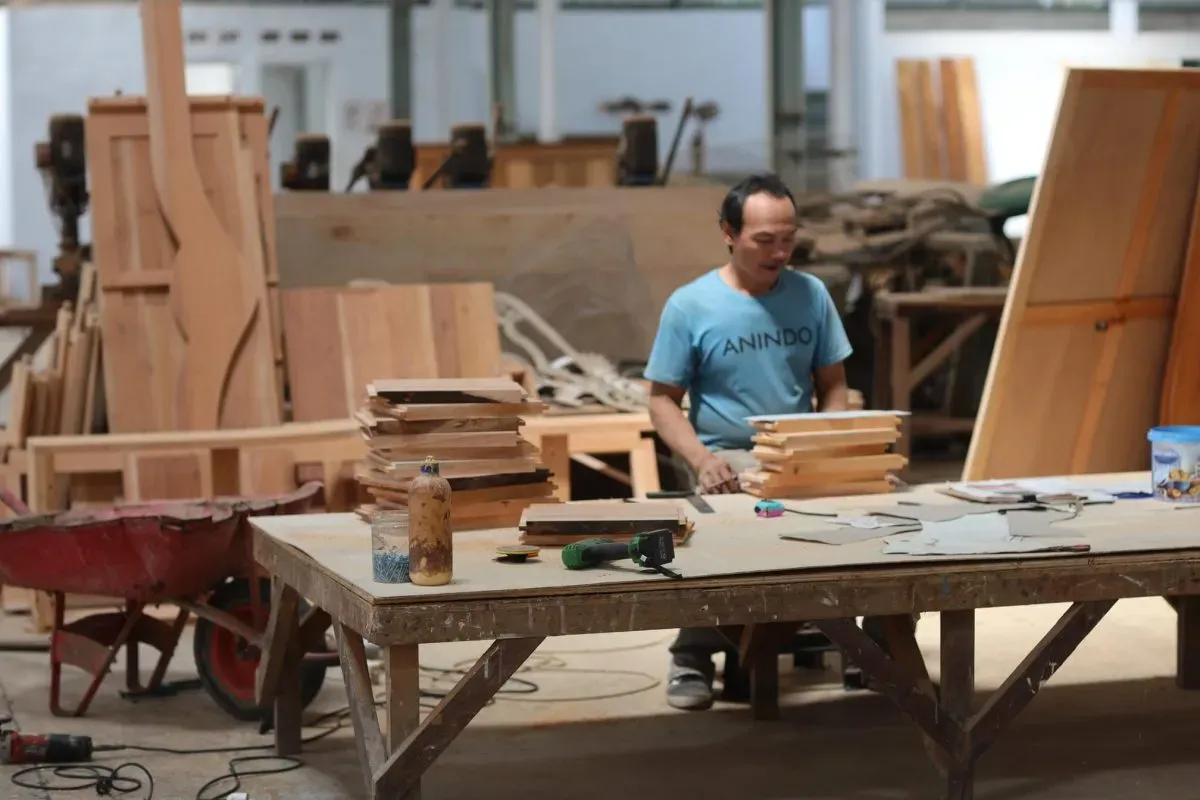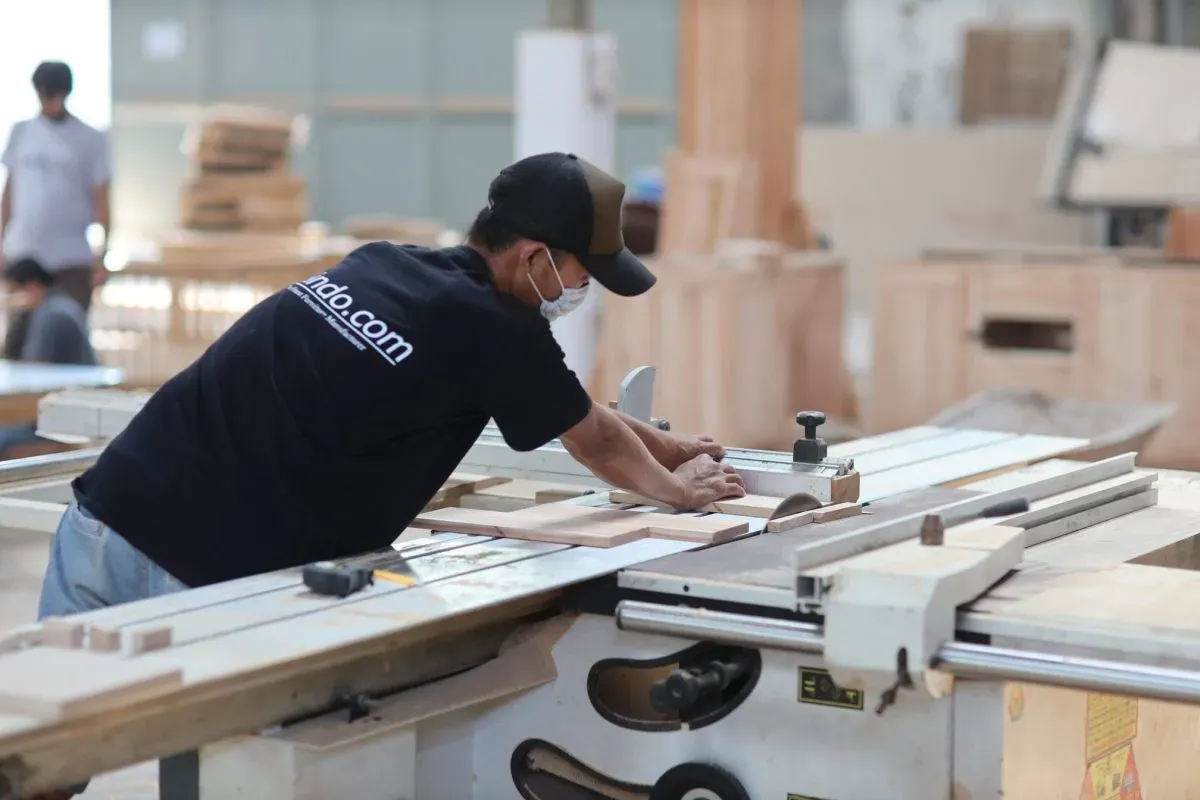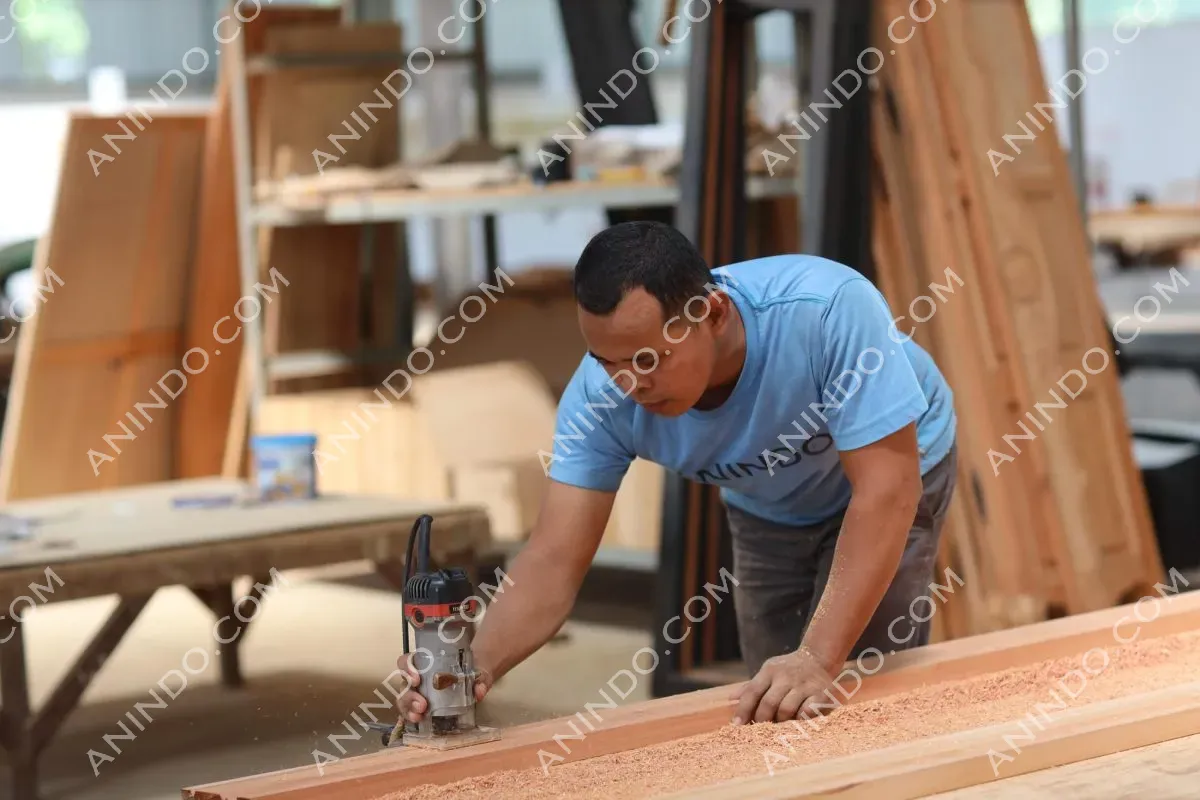PROCESS — COMPONENT PRODUCTION
What is Component Production?
Component production is the essential first stage where raw materials transform into the precise building blocks of your furniture
At Anindo, it’s where solid teak or alternative woods become the exact parts—tabletops, chair legs, cabinet panels—needed for your final design
Unlike full automation, we treat each component as a unique piece: machines handle the repetitive, precise work like cutting and sanding, while craftspeople guide every step to respect the wood’s natural character
This isn’t mass production; it’s precision crafting tailored to your specifications, ensuring every part starts with the same care and attention to detail.
WHY IS It So Important?
It ensures that each piece of furniture has consistent quality, precise dimensions, and the right aesthetic finish
By preparing each component separately, we avoid errors during assembly and guarantee that the final product is strong, durable, and visually appealing
This method also allows us to maintain control over the wood’s moisture content and stability to prevent cracking or warping later on
How Does the Component Production Work?

Step 1: Material Preparation
What: We select and sort kiln-dried wood (like teak or mindi) based on size, quality, and design needs
Why: To ensure only the best materials are used, which guarantees durability, aesthetics, and consistency in the final product
How: Pieces are marked manually or with guides to ensure precise cutting
Output: Only top-quality, properly sorted wood is used for the next steps in production

Step 2: Cutting and Shaping
What: We cutting wood into basic furniture parts using machinery and shaping key areas for assembly
Why: To create accurate components for the final product’s design
How: Specialized tools (e.g., saws) make precise cuts, and workers adjust based on the wood’s natural patterns to avoid defect
Output: Ready-to-assemble wood pieces with clean edges and aligned joints

Step 3: Sanding and Smoothing
What: Polishing surfaces and edges evenly using machines and hand tools
Why: To achieve a smooth, uniform texture ideal for finishing or assembly
How: Machines sand from coarse to fine grit, while workers focus on detailed or curved areas to avoid over-sanding
Output: Flawless surfaces free of rough spots, ensuring quality in final builds.

